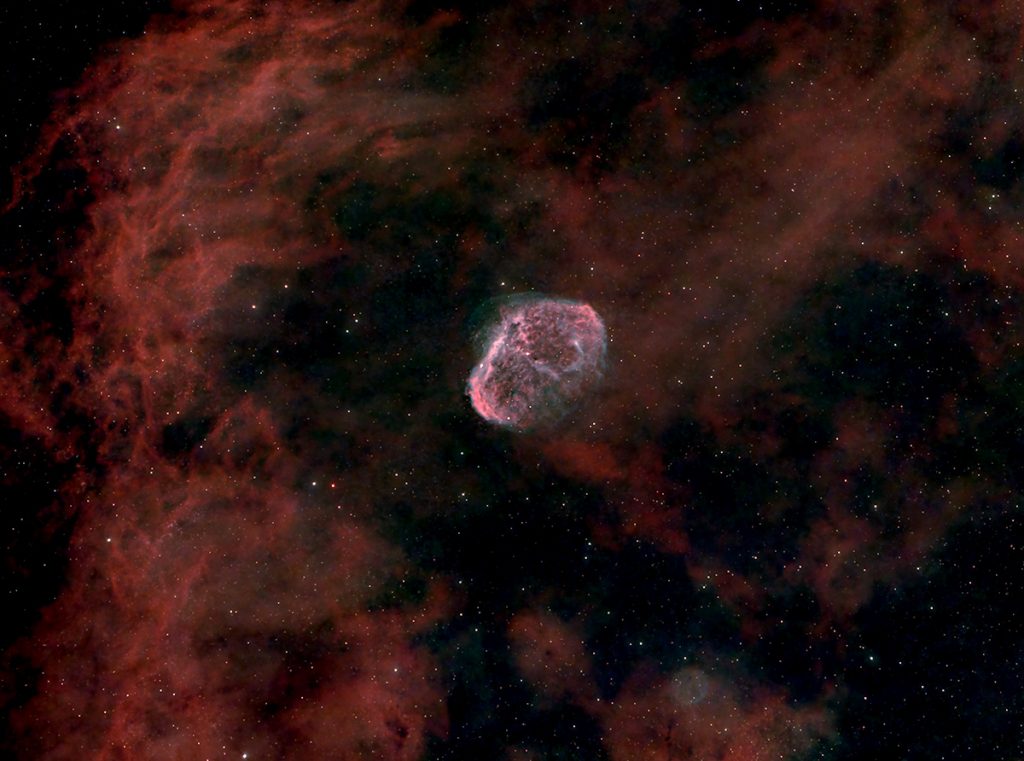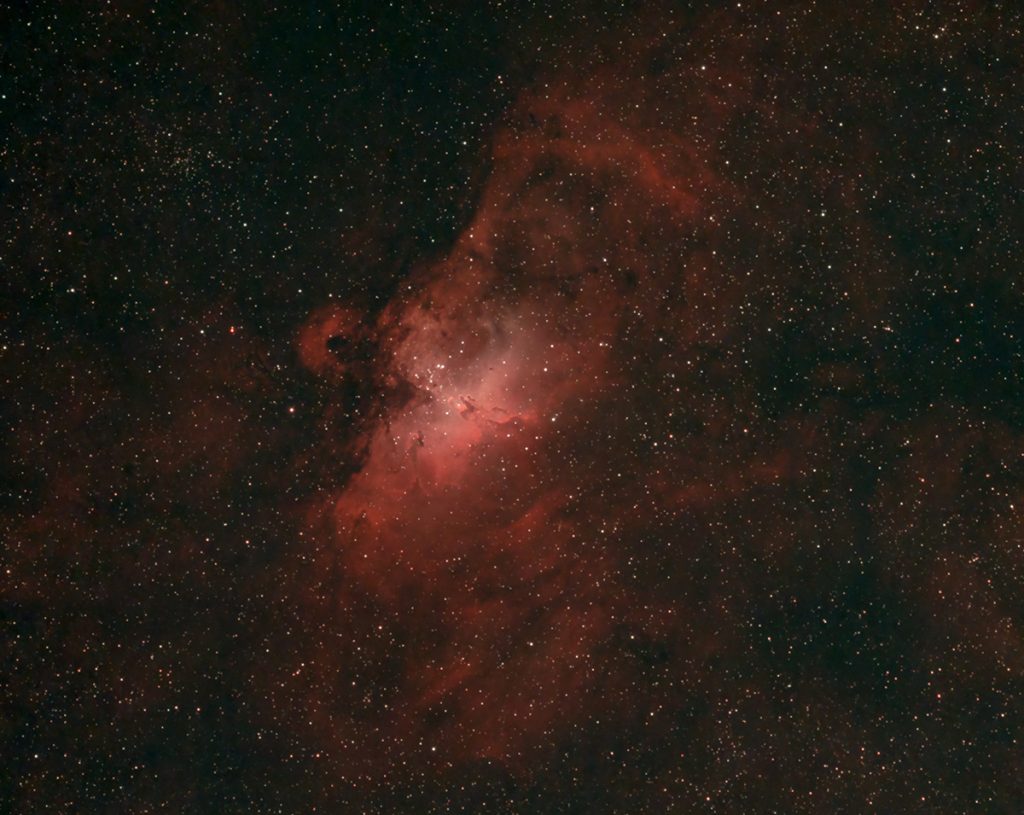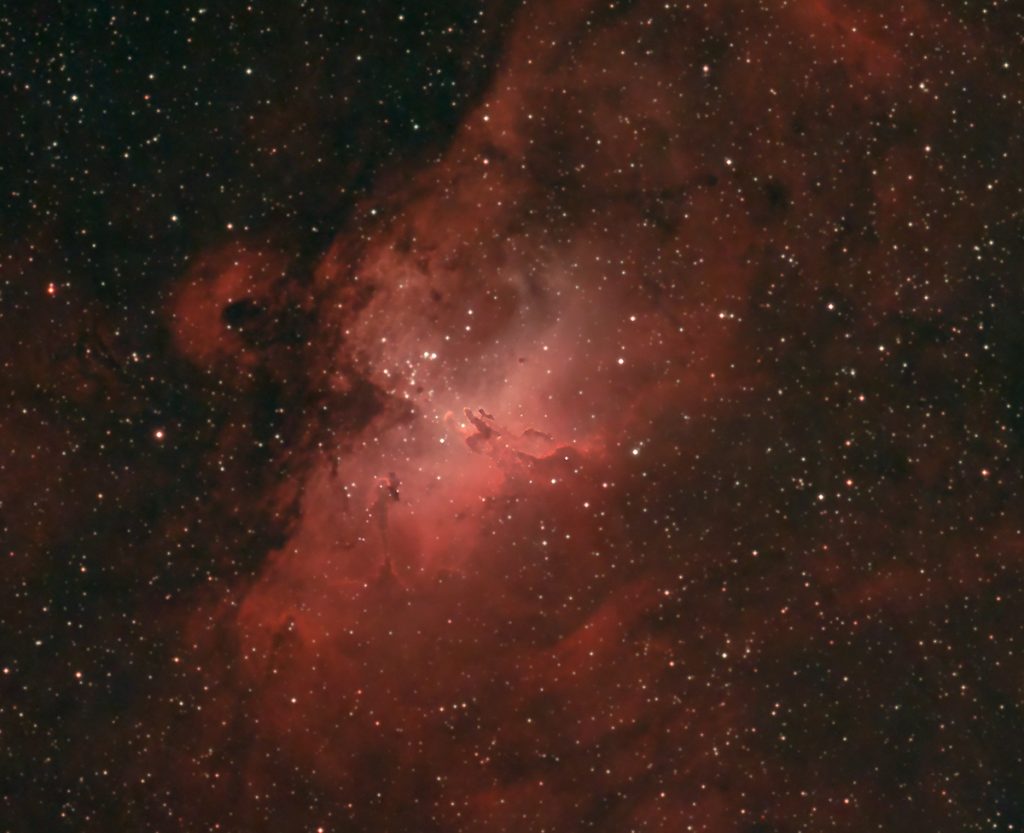I had a few pretty good nights, I put in some hours, staying up to around 2 AM. That gave me about 3-4 hours of shooting time each night, assuming everything went smoothly. I lost some time the first night because the guide scope had lost focus and it was difficult getting it back in focus.

Here’s some info on the Crescent Nebula from Wikipedia:
The Crescent Nebula (also known as NGC 6888, Caldwell 27, Sharpless 105) is an emission nebula in the constellation Cygnus, about 5000 light-years away from Earth. It was discovered by William Herschel in 1792. It is formed by the fast stellar wind from the Wolf-Rayet star WR 136 (HD 192163) colliding with and energizing the slower moving wind ejected by the star when it became a red giant around 250,000 to 400,000 years ago. The result of the collision is a shell and two shock waves, one moving outward and one moving inward. The inward moving shock wave heats the stellar wind to X-ray-emitting temperatures.


One reply on “Summer Astro”
Beautiful images!